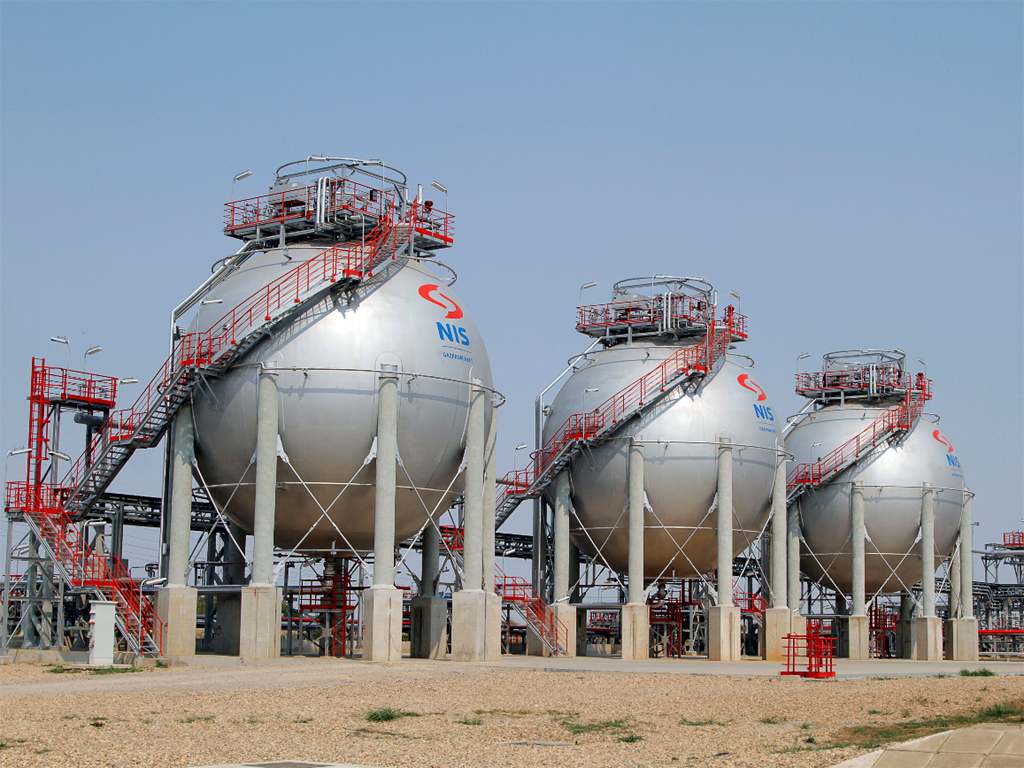NIS tops list of best-performing companies in Serbia - TOP 100 SEE list for year 2012 published by SeeNews
 Tuesday, 22.10.2013.
Tuesday, 22.10.2013.
 12:18
12:18

Serbia ranked 9 companies in the TOP 100 companies chart in the publication SeeNews TOP 100 SEE that was officially presented Friday (18 October 2013), with Naftna Industrija Srbije AD being its best-performing representative – at number 9. It was followed by JP Elektroprivreda Srbije (JP EPS), at 24, and Telekom Srbija AD, at 39.
Serbia had 16 lenders in the TOP 100 banks chart, unchanged from 2011. Banca Intesa AD was the largest Serbian bank, taking the 17thspot. Next came Komercijalna Banka AD (25) and Unicredit Bank Srbija AD (32).
There are 11 Serbian names in the TOP 100 insurers chart. Dunav Osiguranje AD was the largest Serbian insurer for 2012, ranking at number 10. Delta Generali Osiguranje AD and DDOR Novi Sad AD came 16th and 27th, respectively.
The sixth edition of SeeNews TOP 100 SEE was officially presented on October 18, 2013 at the EU-Balkan Summit – one of the major business events of the year organized by The Economist. Cabinet ministers, representatives from the European Commission, heads of financial institutions and organizations gathered together to discuss business opportunities and challenges that the region is currently facing.
The SeeNews TOP 100 SEE ranking (www.top100.seenews.com) covers the best performing companies registered in Albania, Bosnia and Herzegovina, Bulgaria, Croatia, Macedonia, Moldova, Montenegro, Romania, Serbia and Slovenia. The annual issue features three major charts - TOP 100 Companies, TOP 100 Banks and TOP 100 Insurers. The 2013 edition also includes additional rankings, profiles, interviews and feature stories on major events and trends in Southeast Europe (SEE) in 2012.
- SeeNews has laid a strong emphasis on the Sustainability and Industries chapters. It has also prepared for the first time a chart of the largest pharmaceutical manufacturers and distributors and has added a whole chapter on the pharmaceutical sector - Editor-in-Chief Mira Karadzhova says.
SEE countries, with their strengths and weaknesses, painted a mixed picture in 2012, but in general the slowdown in economic activity and rising unemployment rates put a mark on the year all around. The recession in the euro zone had unfavorable influence upon SEE countries’ foreign direct investment and external demand.
All countries in the region reported slower GDP growth rates in 2012 compared to 2011. The main deterrent to the economic activity was the crisis in the euro zone, the major trade partner of SEE countries, which led to last year’s slump in exports. Low household consumption was another important cause for the sluggish performance of the SEE economies. Harsh winter, spring floods, summer drought and forest fires in the region devastated crops and affected trade, infrastructure and economic activity in the region. And yet some of the SEE economies managed to achieve growth, albeit modest, and keep inflation in check. Given the difficulties faced by the euro zone and the disastrous macroeconomic conditions in Greece and Italy, the stable picture in SEE suggests that smaller boats could survive more easily in rough waters.
 NIS a.d. Novi Sad
NIS a.d. Novi Sad
 Elektroprivreda Srbije ad Beograd
Elektroprivreda Srbije ad Beograd
 Telekom Srbija a.d. Beograd
Telekom Srbija a.d. Beograd
 Banca Intesa a.d. Beograd
Banca Intesa a.d. Beograd
 NLB Komercijalna banka AD Beograd
NLB Komercijalna banka AD Beograd
 UniCredit Bank Srbija a.d. Beograd
UniCredit Bank Srbija a.d. Beograd
 Dunav osiguranje a.d.o. Beograd
Dunav osiguranje a.d.o. Beograd
 Generali Osiguranje Srbija a.d.o. Beograd
Generali Osiguranje Srbija a.d.o. Beograd
 DDOR BANKA NOVI SAD
DDOR BANKA NOVI SAD


 Izdanje Srbija
Izdanje Srbija Serbische Ausgabe
Serbische Ausgabe Izdanje BiH
Izdanje BiH Izdanje Crna Gora
Izdanje Crna Gora


 News
News






